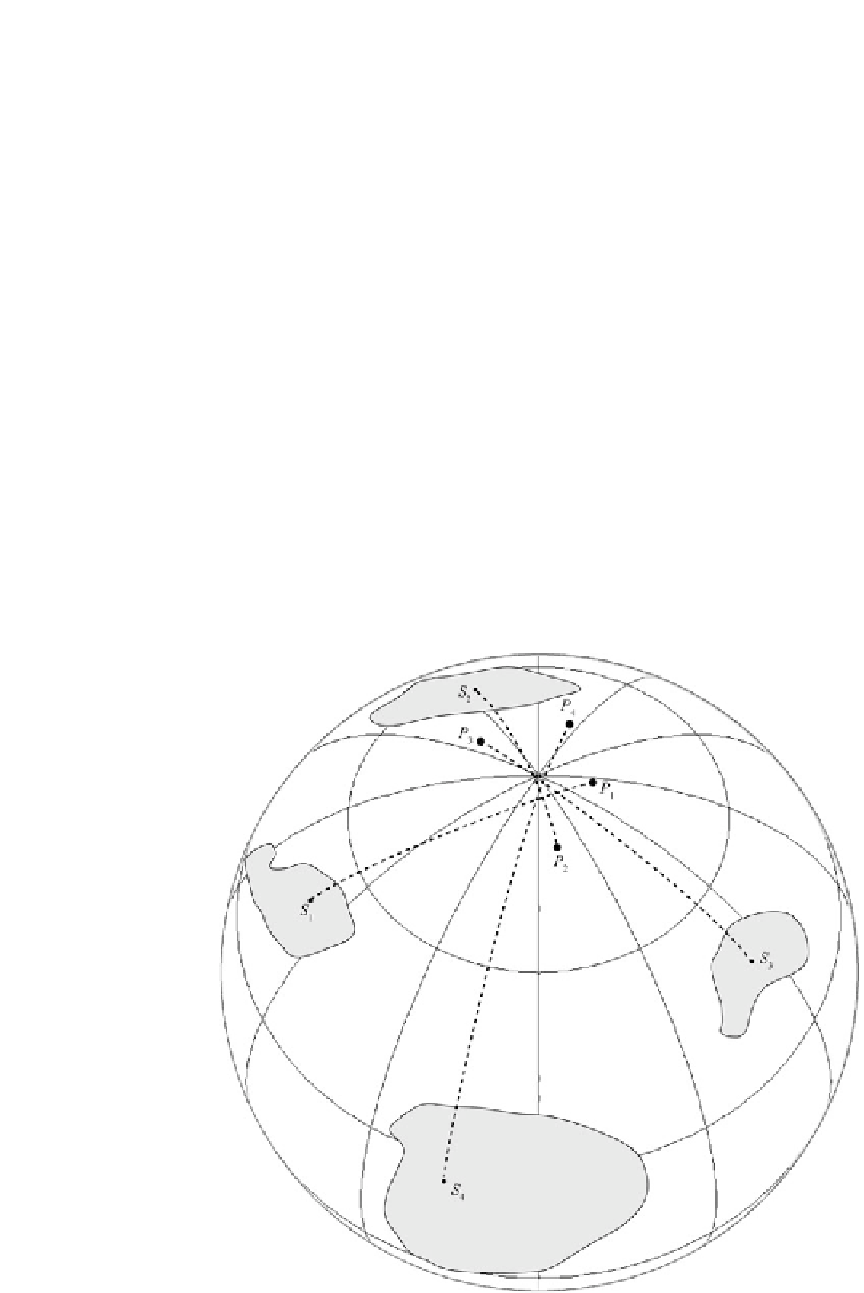Geology Reference
In-Depth Information
drag exerted by the fluid asthenosphere, so that
additional forces came to play. We shall come
back to this point later in this topic.
particular, the northern and southern hemisphere
sea cores had respectively shallower and steeper
inclinations, and this could not be a depositional
effect. Therefore, Wilson (
1970
) suggested that
field, is only an approximation of the correct
formula.
To explain the paleopole distribution, Wilson
(
1970
) proposed that a more refined model of
the time-averaged geomagnetic field was that
generated by an axial magnetic dipole, displaced
northward along the spin axis. In this instance,
the formula relating inclination to colatitude for
an arbitrary displacement •
z
is:
6.8
Non-dipole Paleomagnetic
Fields
Up to this point, we have assumed that time-
averaged paleomagnetic fields are
geocentric
dipole
fields. However, several lines of evidence
suggest that this is only an approximate picture
of the reality, which could not be sufficient to
solve some issues. In a study of paleomagnetic
results from continental igneous rocks and
oceanic sedimentary cores of Quaternary to
Recent age, Wilson (
1970
) showed that individual
paleopoles were systematically displaced from
the geographic North Pole towards the far side
with respect to the sampling site (Fig.
6.41
),
although they were correctly averaged to a point
that statistically coincided with the North Pole. In
2acos ™
C
3•
z
3cos
2
™
1
a sin ™
C
6•
z
sin ™ cos ™
tan I
D
(6.62)
where
a
is the Earth's radius. This formula is the
dipole displaced along the
z
axis. Wilson's field
was already known in geomagnetism, where it
Fig. 6.41
Far-sided effect.
In this example,
Quaternary to Recent
paleopoles
P
i
, sampled at
locations
S
i
on different
continents, are
systematically displaced
towards the far side from
the geographic pole


